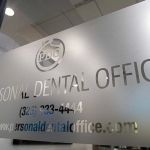Cracked Tooth: Causes, Symptoms, and Effective Treatments for Pain Relief
- What Causes a Cracked Tooth?
- How to Recognize Cracked Tooth Symptoms?
- Treatment Options for Cracked Tooth
- How to Prevent a Cracked Tooth?
1. What Causes a Cracked Tooth?
A cracked tooth can be caused by various factors, ranging from trauma to normal wear and tear. For instance, biting down on something too hard or an accident can lead to a crack. Additionally, teeth grinding (bruxism) or aging can contribute to cracks over time. While cracks might be small and not immediately noticeable, they can worsen if left untreated.
Some individuals are more prone to cracked teeth due to their lifestyle, such as athletes or those who chew on ice. Other contributing factors include existing dental restorations that weaken the structure of a tooth, causing it to crack under pressure. Understanding the causes can help you identify and address a cracked tooth early on.
2. How to Recognize Cracked Tooth Symptoms?
Recognizing a cracked tooth early is crucial to prevent further damage. Common symptoms include sudden sharp pain when chewing or biting down, especially when pressure is applied. If you experience a constant dull ache, this may also be a sign of a crack deep within the tooth.
Another important symptom to watch for is sensitivity to hot or cold temperatures. If you notice discomfort or pain when consuming hot drinks, ice cream, or cold foods, it could be a sign that the enamel of your tooth is cracked. Pain may come and go, making it harder to detect, but don’t ignore it!
In more severe cases, visible cracks or chips can be seen on the surface of the tooth. However, some cracks are microscopic and only detectable by a dentist using special equipment.
3. Treatment Options for Cracked Tooth
If you suspect you have a cracked tooth, it’s essential to visit a dentist for proper diagnosis and treatment. The treatment options for a cracked tooth depend on the severity and location of the crack.
3.1 Minor Cracks
For minor cracks that don’t cause significant pain, your dentist may recommend a dental bonding procedure. This involves applying a composite resin material to the crack, which is then hardened using a special light. The bonding will help prevent the crack from worsening and restore the tooth’s appearance.
3.2 Severe Cracks
If the crack extends deep into the tooth and affects the pulp, a root canal may be necessary to save the tooth. In this case, the dentist removes the infected tissue and seals the tooth. Afterwards, a crown is usually placed to provide structural support and prevent the tooth from fracturing further.
3.3 Tooth Extraction
In extreme cases where the crack is too severe to treat, the dentist may recommend extracting the tooth to prevent infection or further complications. If this happens, dental implants or bridges can be used to replace the missing tooth and restore functionality.
4. How to Prevent a Cracked Tooth?
Prevention is always better than cure. Here are some tips to help you avoid cracked teeth:
- Avoid chewing on hard objects such as ice, pens, or hard candy.
- If you grind your teeth at night, consider using a mouthguard to protect your teeth.
- Be cautious when playing sports. Wearing a mouthguard can protect your teeth from trauma.
- Maintain regular dental visits to detect early signs of wear and tear, which could lead to cracks.
By following these tips, you can minimize your risk of developing a cracked tooth and keep your smile healthy.
If you believe you might have a cracked tooth, don’t wait for the pain to worsen! Contact Dentistry Toothtruth today for professional advice and treatment. We specialize in cracked tooth care and can help you find the best solution for your dental health.
For more information on cracked tooth treatments or to book an appointment, visit Dentistry Toothtruth.







 Dr. James L. Pelletier4.0 (79 review)
Dr. James L. Pelletier4.0 (79 review) Dynamic Dental & Orthodontics4.0 (347 review)
Dynamic Dental & Orthodontics4.0 (347 review) Dr. Edward R. Haggerty Jr, DDS3.0 (7 review)
Dr. Edward R. Haggerty Jr, DDS3.0 (7 review) Anchor Dental0.0 (0 review)
Anchor Dental0.0 (0 review) Dr. Stephen M. Buchanan, DDS3.0 (10 review)
Dr. Stephen M. Buchanan, DDS3.0 (10 review) Personal Dental Office & Orthodontics4.0 (228 review)
Personal Dental Office & Orthodontics4.0 (228 review) The Importance of Oral Health Education During Pregnancy for a Healthy Pregnancy
The Importance of Oral Health Education During Pregnancy for a Healthy Pregnancy Best Tips for Brushing Your Teeth Properly for Healthy Gums: Essential Techniques for Oral Health
Best Tips for Brushing Your Teeth Properly for Healthy Gums: Essential Techniques for Oral Health Why Skipping Dental Checkups Can Lead to Bigger Oral Health Problems
Why Skipping Dental Checkups Can Lead to Bigger Oral Health Problems Advantages of Porcelain Dental Restorations
Advantages of Porcelain Dental Restorations How Can Diabetes Cause Tooth and Gum Problems? Preventing and Managing Oral Health Issues
How Can Diabetes Cause Tooth and Gum Problems? Preventing and Managing Oral Health Issues Healthy Habits for Promoting Good Oral Health and Hygiene: Tips for a Healthy Smile
Healthy Habits for Promoting Good Oral Health and Hygiene: Tips for a Healthy Smile